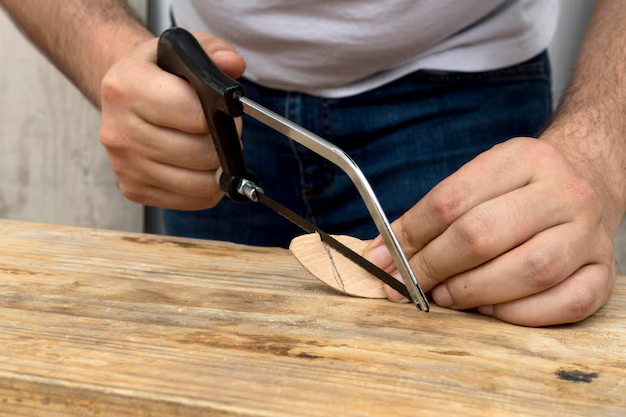How to Repair Your Refrigerator Seal: A Comprehensive Guide
Your refrigerator is one of the unsung heroes of your kitchen, tirelessly keeping your food fresh and drinks cool. Yet, when its seal begins to fail, the chill escapes, and the efficiency plummets. Not only can it lead to spoiled food, but also a spike in energy bills. So, how can you resolve this issue? Let’s delve into the process of fixing a refrigerator seal, exploring the steps involved and some related insights that can help you along the way.
📌 Why Refrigerator Seals are Important
Refrigerator seals, also known as gaskets, serve a crucial role in maintaining the appliance’s internal temperature. They are designed to create an airtight barrier between the fridge's interior and the outside environment. A proper seal ensures:
- Efficiency: By preventing warm air from entering, the refrigerator operates more efficiently, reducing energy consumption.
- Food Preservation: Keeping the cool air inside helps in maintaining the optimum condition for food storage.
- Cost Savings: It minimizes energy waste, leading to lower electricity bills.
🛠️ Identifying a Faulty Seal
Before you begin the repair, it's essential to determine if the seal is indeed defective. Here's how you can check:
Visual Inspection
Look for cracks, tears, or mold growth on the gasket. These visible signs often indicate that the seal isn’t functioning correctly.
The Paper Test
Close a piece of paper in the door. If you can pull it out easily, the seal is likely compromised and affects the fridge's performance.
Temperature Check
Notice if the fridge is struggling to keep items cold, indicating an issue with the door seal.
🔧 Steps to Fix a Refrigerator Seal
1. Clean the Gasket
Often, dirt and debris can cause the seal to malfunction. Use a mixture of warm water and mild detergent to clean the gasket thoroughly. Dry it seamlessly with a soft cloth to ensure no moisture is left behind.
2. Apply Petroleum Jelly
If the gasket is stiff in some spots, you can apply a small amount of petroleum jelly along the edges. It can sometimes help in creating a better seal.
3. Use a Heat Gun
Carefully use a heat gun or hairdryer to soften the gasket. Doing this can make it more pliable, allowing it to fit the refrigerator door more snugly.
4. Realign the Seal
If the seal is out of alignment, gently tug it back into place. Ensure that the seal is flush against the refrigerator surface when the door is closed.
5. Replace the Gasket
If cleaning and minor adjustments don't work, replacing the seal may be necessary. You can purchase a new gasket compatible with your refrigerator model and install it using these steps:
- Remove the Old Seal: Loosen the screws holding the old seal in place and gently pull it away.
- Install the New Seal: Align the new gasket, ensuring it fits the tracks perfectly. Secure the screws without over-tightening to avoid warping the seal.
6. Professional Help
If DIY efforts fail, or you prefer not to tackle the task, seeking professional assistance may be a wise decision. Refrigeration experts can offer precise gasket replacement services.
🔍 Tips to Extend Gasket Life
- Regular Cleaning: Keep the gasket free from grime and mildew by wiping it down monthly.
- Door Maintenance: Avoid slamming the fridge door, which can damage the seal.
- Check for Ice Build-up: Defrost your fridge periodically to prevent ice from forming around the seal.
Related Topics to Explore
Energy Efficiency in Refrigeration
It's worthwhile to examine how maintaining the condition of seals contributes to the overall energy efficiency of the refrigerator. Most modern fridges are built with energy-saving technology, meaning a properly functioning seal is crucial.
Understanding Refrigerator Thermodynamics
Understanding the basics of how your refrigerator works—the process of absorbing and expelling heat—can illuminate why seal integrity is critical. This knowledge can assist you in troubleshooting other refrigerator issues.
Purchasing the Right Replacement Seal
Ensure that you obtain the correct replacement seal by checking:
- Model Compatibility: Use your refrigerator's model number to find the right gasket.
- Material and Size: Ensure the new seal matches the material and size of the old one for optimal performance.
DIY vs. Professional Repair
Balancing your comfort level with DIY repairs and the benefits of professional services can help you decide the best course of action when dealing with gasket issues.
🌟 Quick Summary and Takeaways
Here's a concise guide to fixing a refrigerator seal:
- Inspect Visuals: Start by identifying any obvious damage.
- Test Seal Integrity: Simple tests like the paper test can confirm the issue.
- Clean and Adjust: Basic cleaning and minor alignments can sometimes fix problems.
- Heat Application: Use a heat gun for better seal flexibility.
- Replace if Necessary: When repairs fail, a new gasket is the solution.
- Maintenance Tips: Regular cleaning and care can prolong seal life.
🧰 Take Action Now: Regularly check your refrigerator's seal to prevent inefficiency and costly energy bills.
By attending to your refrigerator seal, you not only ensure your appliance runs efficiently but also protect your food storage investments. Armed with this knowledge, you’re better prepared to tackle any issues head-on, keeping your kitchen in smooth, cost-effective operation.
Whether you opt for a DIY solution or call in the professionals, ensuring your refrigerator's seal is in top condition is an easy step toward a more energy-efficient home. Test your seal today and stay ahead of potential issues!
